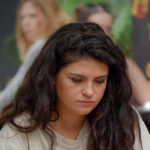
Animation has been a form of entertainment and storytelling for nearly a century, enchanting audiences of all ages. From the first silent cartoons to modern-day CGI masterpieces, animated shows have not only entertained but also shaped societies, influenced cultures, and fostered creativity. This article will explore the fascinating evolution of animated shows and their lasting impact on generations.
1. The Evolution of Animation: A Historical Perspective
Animation has come a long way from its beginnings in the early 20th century. Here’s a brief timeline of its evolution:
– **Early 1900s**: The first animated films were short, silent cartoon shorts, such as **”Gertie the Dinosaur” (1914)** created by Winsor McCay, which helped pioneer techniques in character animation.
– **1920s-1930s**: With the introduction of synchronized sound, animation came to life more than ever before. **Walt Disney’s iconic character Mickey Mouse debuted in “Steamboat Willie” (1928)**, marking the birth of character-driven storytelling in animation.
– **1937**: Disney released **”Snow White and the Seven Dwarfs,”** the first feature-length animated film, establishing animation as a serious art form.
– **1950s-1960s**: The advent of television led to the rise of classic animated series like **“The Flintstones” (1960)** and **“The Jetsons” (1962)**, which became cultural icons in their own right.
– **1980s-1990s**: The era of TV animation exploded with hits like **“The Simpsons” (1989)**, which introduced a new kind of animation aimed at adult audiences. This decade also saw the emergence of unique styles with shows like **“Batman: The Animated Series” (1992)** reaching critical acclaim.
– **2000s-Present**: The advancement of technology allowed for innovative storytelling techniques and animation styles, leading to remarkable series such as **“Avatar: The Last Airbender” (2005)** and **“Adventure Time” (2010)**, which engage a broader range of themes and audiences.
Through each of these phases, animated shows reflected societal changes, mirroring the values, humor, and challenges of their times.
2. Cultural Influence of Cartoon Classics
Animated shows not only provide entertainment; they inform and influence cultural identity. Here are some key areas where cartoons have made a significant impact:
– **Social Norms and Values**: Shows like **“Mister Rogers’ Neighborhood”** and **“Sesame Street”** introduced children to essential social values, such as kindness, acceptance, and critical thinking skills. They helped children navigate social interactions and cultural diversity from an early age.
– **Gender and Representation**: Animations like **“Dora the Explorer”** and **“Kim Possible”** challenged traditional gender roles, promoting female empowerment and inspiring young girls to be adventurous and confident. Similarly, shows such as **“Steven Universe”** tackled themes of acceptance and LGBTQ+ representation, breaking barriers for inclusivity in the media.
– **Political Commentary**: Many cartoons have offered a satirical take on politics and society, with **“The Simpsons”** and **“South Park”** providing sharp social critiques through humor. These shows engage audiences in discussions about political issues while entertaining them at the same time.
Through humor and unique storytelling, animated shows have not only entertained but have also contributed to shaping cultural discussions and societal norms.
3. Educational Value of Animated Shows
Many animated shows are not only entertaining but also educational. They play a crucial role in early childhood education through:
– **Engaging Learning Techniques**: Shows like **“Schoolhouse Rock”** utilized catchy songs and stories to teach children about math, science, and grammar, making learning fun and memorable. This blend of music and animation enhanced retention of information, imbuing knowledge through entertainment.
– **Encouraging Curiosity**: Programs such as **“Curious George”** and **“Magic School Bus”** offer explorative learning, fostering a love for discovery and critical thinking. These shows encourage children to ask questions, explore their surroundings, and develop an inquisitive mindset.
– **Coping Skills and Emotional Intelligence**: Cartoons like **“Inside Out” (2015)** provide children with tools to understand their emotions and cope with various life situations. By depicting emotions as relatable characters, children learn about feelings such as happiness, sadness, anger, and fear in a narrative context.
Animated shows serve as powerful educational tools that shape young minds and prepare them for the challenges of life.
4. Nostalgia and Generational Impact
Nostalgia plays a significant role in how animated shows resonate with different generations. Many adults often revisit shows they watched as children, leading to:
– **Shared Experiences**: Classic cartoons like **“Looney Tunes,” “Tom and Jerry,”** and **“Scooby-Doo”** create a sense of shared experience. Parents and their children bond over these timeless stories, often viewing them together and passing down the love of animation through generations.
– **Influences on Modern Creators**: Many modern animators and creators have cited childhood favorites as inspiration for their work. For instance, shows like **“Teenage Mutant Ninja Turtles”** and **“DuckTales”** spawned reboots, continuing the legacy of beloved characters while introducing them to new audiences.
– **Cultural Phenomena**: Iconic animated shows like **“The Simpsons”** have left an indelible mark on popular culture, influencing everything from fashion to language. The references and catchphrases from these shows become ingrained in societal conversations.
The nostalgia associated with animated shows fosters creativity and reinforces intergenerational bonds, shaping how families connect and communicate.
5. Future Perspectives: The Continuing Legacy of Animation
As technology advances, the animation landscape will continue to evolve. Here are some future trends to watch:
– **Diversity and Inclusion**: The push for greater representation in animated content will likely continue to grow, with studios focusing on creating diverse characters and narratives that reflect the richness of cultural experiences.
– **Interactive and Immersive Animation**: The rise of virtual reality (VR) and augmented reality (AR) may lead to new forms of storytelling, where viewers can interact with characters and environments, creating a more personalized experience.
– **Environmental Responsibility**: With growing awareness of environmental issues, animated shows may begin to focus more on sustainability themes and educate audiences on taking care of the planet through engaging narratives.
The future of animation promises exciting developments, building on its historical legacy while continuing to shape culture and inspire new generations of viewers.
Conclusion
As we reflect on the enduring influence of animated shows, it becomes evident that their role extends far beyond entertainment. They have the power to educate, inspire, and shape cultural narratives, leaving an indelible mark on generations. Cartoon classics will continue to resonate deeply as storytelling evolves, illustrating the universal themes that connect us all. Whether it’s through humor, creativity, or societal reflection, animated shows remain a vital and dynamic part of our cultural landscape, promising to enchant and engage audiences for years to come.







